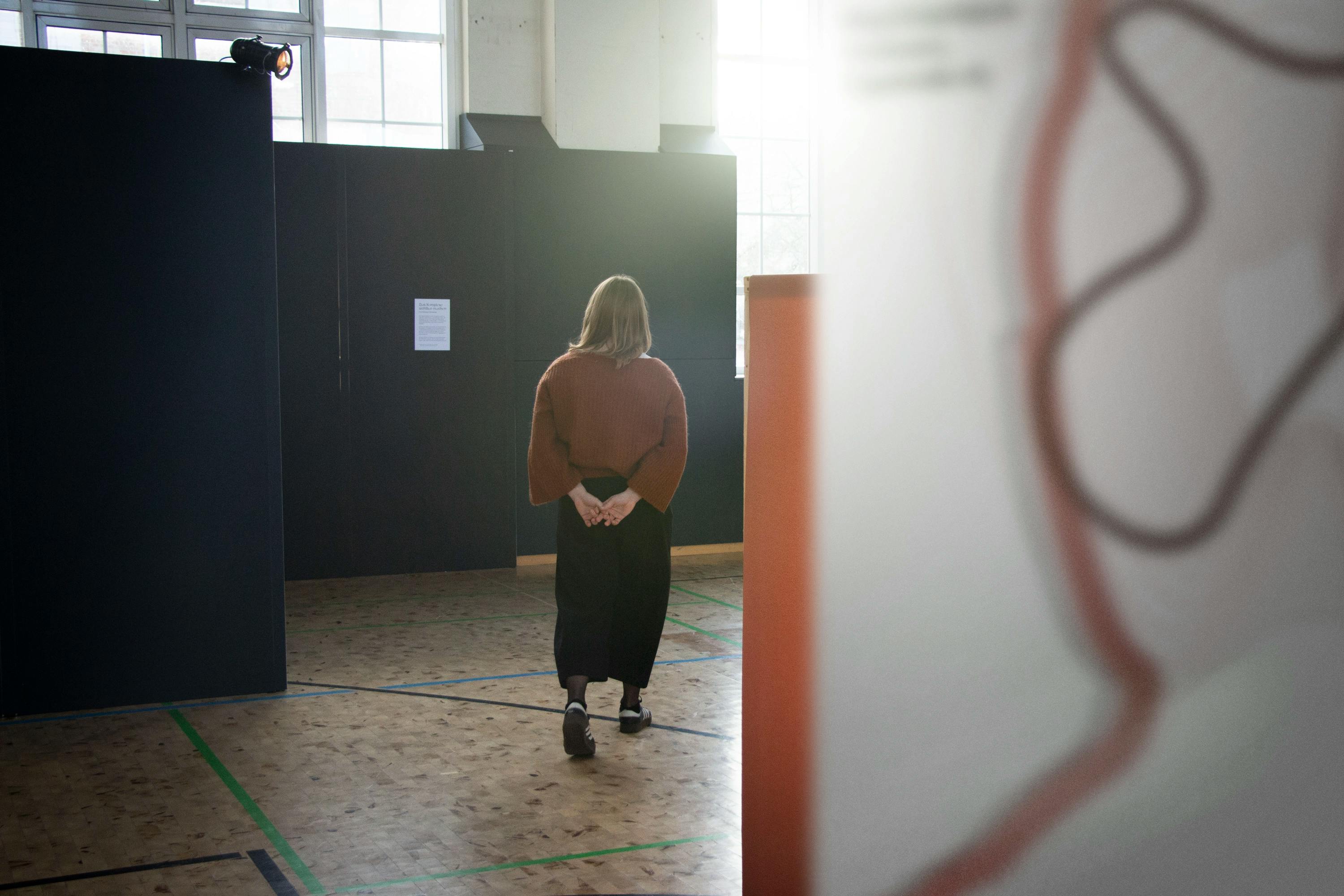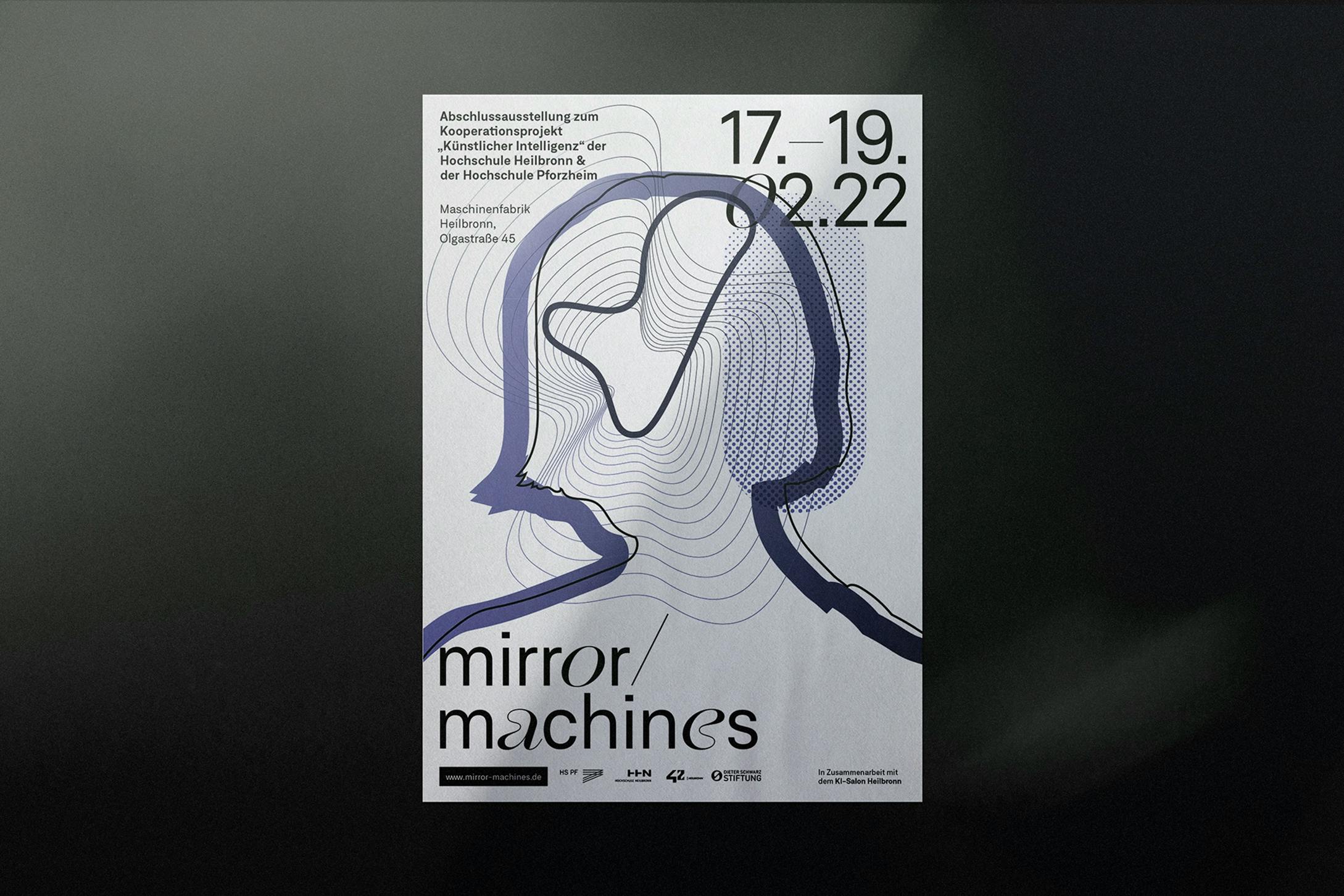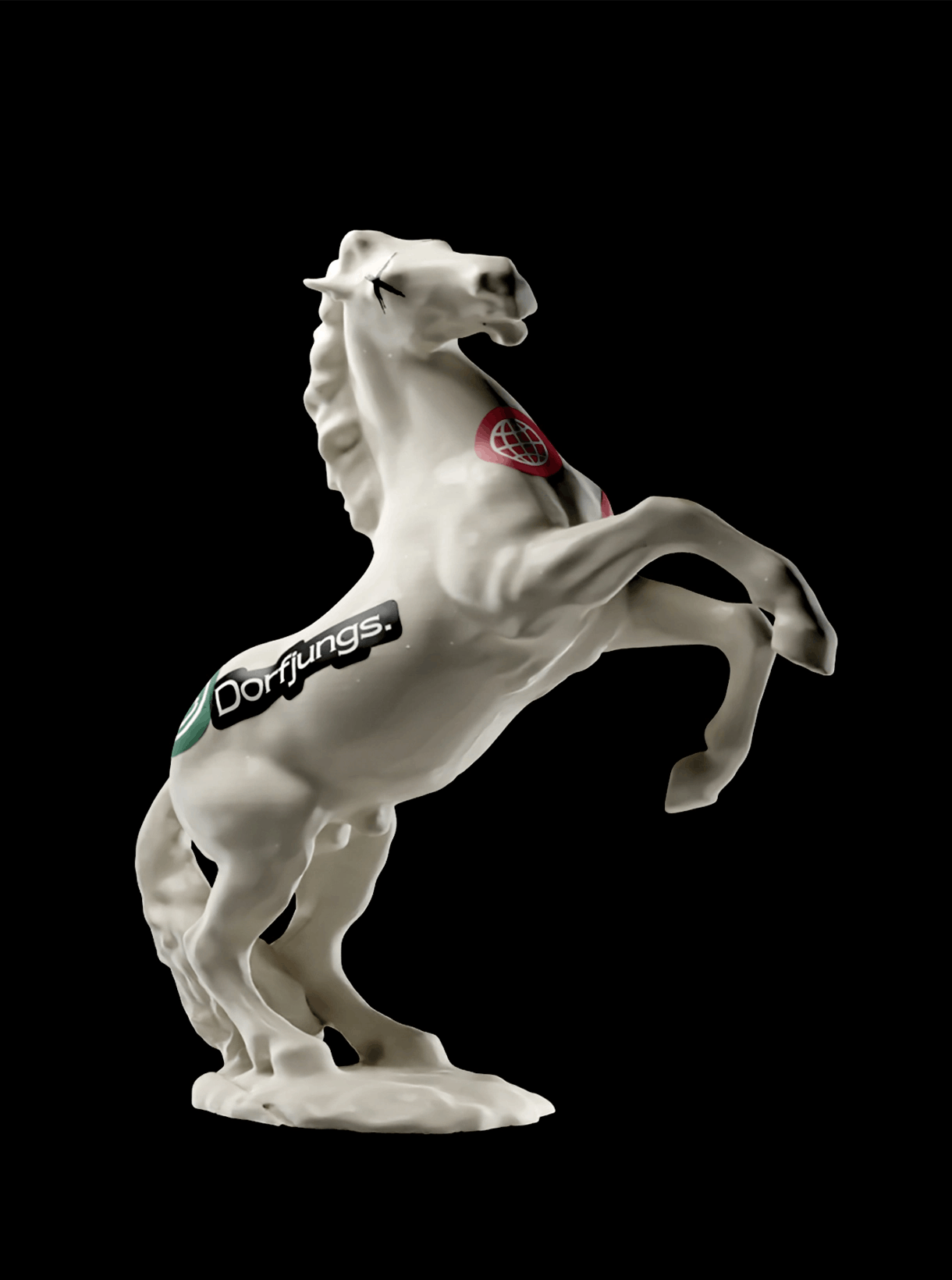Artificial intelligence is the key technology of the 21st century. From predicting illnesses and the effects of climate change to optimizing industrial production processes, artificial intelligence helps us face the challenges of today's world. However, artificial intelligence also raises countless questions of how we want to live together.
Students of Visual Communication at University Pforzheim collaborated with Software Engineering students at University Heilbronn in an interdisciplinary exhibition to find creative approaches to communicate the massive impact AI has on our society. The exhibition was held in a former machine factory that now functions as an communal space for events, concerts and sports.
mirrormachines
© 2022

Technology is just a tool, it just reflects what you are. It’s not an entity in itself. If it hurts you, it’s just because it’s a mirror. — Yoann Lemoine ( Woodkid ).





The title mirror/machines was chosen to reflect on how AI mirrors humanity. Each flaw in society will ulitmately be visible in data sets. AI is created in the image of humans, but it's far from perfect at this point. The research and development of the ultimate form of digital hyperintelligence continues.
As this exhibition focuses on the rising challenges for society in the ongoing socio-technological change, it was important to also find human aspects and softness in artificial intelligence. This is why we used a typographic mix that embodies pragmatism and technology, but also beauty and creativity.


We wanted to showcase how people's perspectives on technological advances might change and warp with each new piece of information they recieve. Ultimately, the key visual represents the visitor's experience when they take a conscious look at their own understanding of technology.
In total, nine different exhibition posters were created with the help of artificial intelligence and randomly generated vector graphics. The resulting poster campaign was then spread out all over Heilbronn's advertising columns. Visitors and participating students had the chance to generate their own abstract portrait by answering questions on a terminal in the exhibition.



In order to tie together all the individual student projects, the typographic mix of the poster campaign and exhibition title was additionally used for exhibit lables. We printed them on A4 paper and applied them to lightweight foam boards. This was a very low-cost, efficient way to raise them up from the matte black walls, almost creating the appearance of Alu Dibond prints.


Students for Software Engineering, University Heilbronn, lecturer: Prof. Dr. Nicole Ondrusch. Sudents for Visual Communication, University Pforzheim, lecturer: Dipl.-Des. Dagmar Korintenberg. In collaboration with 42 Heilbronn, KI-Salon Heilbronn and Wieluch.
Laura Hagenschulte
Daniel Schell
Marvin Simon
Neufile Grotesk (Linotype)
Olten Italic (Muhittin Güneş)
© 2021 Adrian Wilhelm. All rights reserved.
Contact
Let’s talk about design, work & horror movies.




